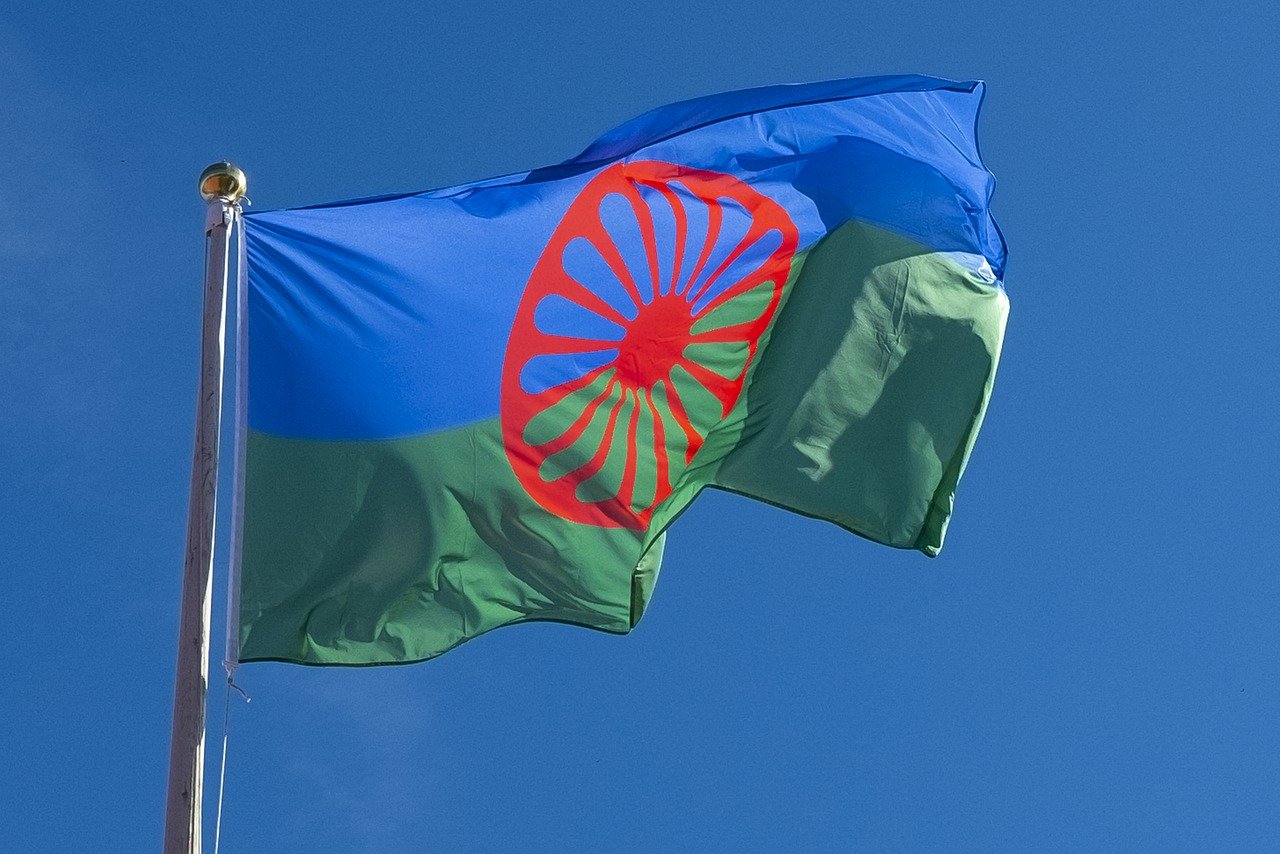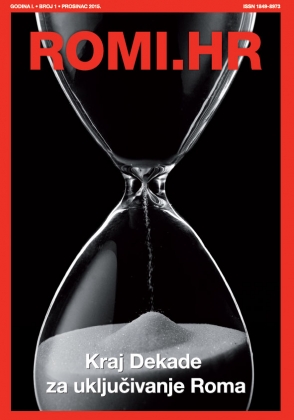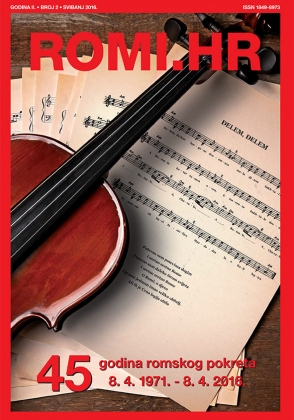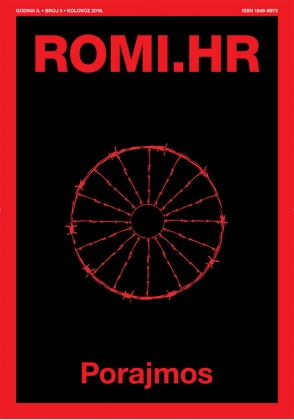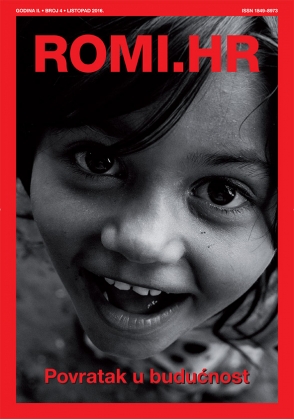Fokus ROMI.HR
/Šarolika povijest Roma u Rusiji započela je već u 17. stoljeću kada je Romanovo carstvo osvojilo dijelove rubna područja Poljsko-litvanske državne zajednice kao rezultat rusko-poljskog rata 1654.-1667. U to su vrijeme Romi živjeli u pograničnom području Poljske i Rusije, većinom u Smolenskoj i Brjanskoj, gdje su kasnije ‘Ruska Roma' postali većina unutar romske zajednice.
Prijevod: Melike Sariguel
Što se tiče službenih dokumenata, Romi se prvi put spominju u Poreznoj uredbi objavljenoj 1733. godine u vrijeme carice Ane Ivanovne. Dakle, ovom su Uredbom izravno «utvrđeni porezi za Cigane (Rome) <...> u Slobodnim pukovnijama, te su im velikim gradovima Rusije i okruzima dodijeljenim slobodnjačkim pukovnijama, te su određivane posebne osobe za sakupljanje poreza, jer Cigani (Romi) nisu bili uključeni u popis stanovništva».
Kasnije te godine, Romi u Ingermanlandu (kako se u to vrijeme nazivao teritorij Sankt Peterburga i Lenjingradskog okruga) spomenuti su u Uredbi Senata, koji je skupini omogućio trgovinu konjima i naseljavanje oko Sankt Peterburga. Uz to, Uredbom je utvrđeno da su Romi „lokalno stanovništvo“, i zbog toga zaslužuju dopuštenje da ih se kasnije popiše u okruzima koje će oni sami odabrati.
Danas većina povjesničara tvrdi da su Romi uživali prilično povoljan položaj u Ruskom Carstvu. Iako su Romi bili kao seljaci s obvezom plaćanja poreza, nakon Uredbe 1783. godine, Rusko Carstvo nije uvelo nikakve posebne mjere za porobljavanje Roma, za razliku od ostalih seljaka na tom teritoriju. Štoviše, Romima je bilo dopušteno pridružiti se bilo kojem staležu, osim plemstva. Uredba Senata 1800. godine odnosila se na slučajeve kada su Romi napredovali s filistrima i trgovci u nekoliko okruga Rusije.
Tokom 18. stoljeća, nove skupine Roma počele su pristizati u Rusiju s nizom proširenja teritorija Carstva. Na primjer, ‘Polski Roma’ prvi su se put pojavili u ruskim zemljama nakon tri podjele Poljske (1772. - 1795.), Moldavski i Krimski Cigani (Romi) počeli su boraviti i kretati unutar zemlje, nakon ruske aneksije na Besarabiju i Krim.
Godina 1774. poznata je kao prekretnica u povijesti Roma i vrijeme kada je Grof Orlov-Česmenskij doveo prvu romsku skupinu akapela u Rusiju. Kasnije se ova skupina akapela pretvorila u pjevački zbor i pripremila teren za uspon profesionalnih muzičara Roma u Ruskom Carstvu. Zborovi su nastavili svoje djelovanje u Moskvi i Sankt Peterburgu početkom 19. stoljeća, kada je romska glazba postala posebno popularna. Kao što je Lav Tolstoj jednom primijetio: «Bilo je godina kada se u Rusiji nije voljela nijedna druga glazba kao ciganska [romska] glazba». Navodno, u to vrijeme, ljudi u Carstvu također su ironično govorili: «Rus u životu umire dva puta: jednom za Domovinu, a drugi put slušajući cigansku [romsku] glazbu».
Romi su čak počeli biti prihvaćani u rusku plemićku klasu, i istaknute osobe elite carstva, kad su se njeni pripadnici počeli vjenčavati s djevojkama iz romskih zborova. Ujak gore spomenutog ruskog književnika Lava Tolstoja, Fjodor Ivanovič Tolstoj-Amerikanac, koji se oženio mladom Romkinjom Avdotijom Tugaevom, često se naziva najsvjetlijim primjerom koji to ilustrira.
Početak 19. stoljeća značajan je za povijest Roma u Rusiji, i to ne samo u smislu ogromnog kulturnog utjecaja. Tokom Napoleonskih ratova Romi su davali znatne iznose novca za financiranje ruske vojske. Na primjer, romski zborovi u potpunosti su financirali Pukovniju dragovoljaca iz Smolenska. Nadalje, svi muškarci iz zbora Graf Orlova pridružili su se husarima 1812. godine, dok su starci i žene davali po 500 carskih rubalja za podršku vojsci. Dulkevič, Rom koji je bio uzgajivač konja i vele trgovac, darovao je sve svoje konje za vojsku.
Kasnije, druga polovina 19. stoljeća označila je novu eru u povijesti Roma u Rusiji, uz značajan porast broja Roma na teritoriju Carstva. Dakle, novi priljev Roma u zemlju dogodio se nakon što su Vlaška (povijesna i zemljopisna regija Rumunjske), Moldavija i Mađarska ukinule ropstvo, dok su istovremeno uvodile nove politike provedbe za naseljavanje populacije Roma, i namećući dodatne poreze tim skupinama. Izvori posebno navode da su Kalderi i Lovari stigli u Rusiju nakon bježeći od represivnih politika s kojom su se suočavali u istočnoj i srednjoj Europi tokom druge polovice 19. stoljeća.
Razne romske zajednice nastavile su putovati i naseljavati se velikim teritorijem Ruskog Carstva sve do kraja 19. stoljeća. Stoga, prema izvještajima iz 1897. godine, veliki broj Roma pojavio se u zapadnom Sibiru, naseljavajuči se u gubernjama Tomsk, Tobolsk, Irkutsk, Jenisej. Anketa sugerira da su sibirski Romi (ili “Sibirska Roma“) uglavnom bavili u takve profesije prodajom stoke (38,2%), poljoprivredom (13,1%), nadničarskim radom (7,1%) itd. U zapadnom i središnjem dijelu Rusije Lovari i Kalderi uglavnom su se bavili trgovinom i obradom metala. Istodobno su održavali visoku razinu mobilnosti i pružali usluge stanovništvu širom Rusije. Tako su se do kraja 19. stoljeća Romi naselili u većinu podrućja Ruskog carstva stvarajući privremena i stalna prebivališta. Bili su to manje Ruska Roma, Polska Roma, moldavske i ukrajinske cigane [Roma], kao i Ljulji, Karači, Boša, Kalderaši i Lovari.
The colorful history of the Roma people in Russia starts as early as in the 17th century when parts of peripheral territories of the Polish-Lithuanian Commonwealth were conquered by the Romanov’s Empire as the result of the Russian-Polish war in 1654-1667. At that point, Roma lived all across the border of Poland and Russia, mostly in Smolensk and Bryansk oblasts, where the Ruska Roma later on started to represent a majority of the whole Roma population. Here the Ruska Roma is referred to as a distinct Roma group, not covering all the Roma population in Russia.
Regarding the official documents, Roma were first mentioned in the tax decree released under the rule of Empress Anna Ioannovna in 1733. It was thus directly assigning «to determine the fees from Cigane (Roma) <…> in the Slobod regiments, in the Great Russian cities and districts assigned to the Slobod regiments, and to define a special person for this collection, as Cigane (Roma) are not included in the census».
Later that year, the Roma in Ingermanland (territory of Saint Petersburg and Leningrad oblast these days) were mentioned in the Senate’s decree, allowing the group to trade horses and settle around Saint Petersburg. Additionally, the decree announced that Roma proved to be «local inhabitants», and, therefore, deserved permission to be later censused in districts chosen on their own.
These days many historians argue that Roma enjoyed quite a favorable position in the Russian Empire. Even though Roma were identified as a peasantry with the obligation to pay taxes in the aftermath of the decree of 1783, the Russian Empire did not introduce any particular measures to enslave Roma, unlike other peasants in the territory. Moreover, Roma were further allowed to join any estate except nobles. In 1800, the Senate’s decree was referring to the cases when Roma uplifted to philistines and merchants in a few districts of Russia.
Throughout the 18th century, new Roma groups started to arrive to Russia with the consecutive enlargement of the empire’s territory. For instance, the Polska Roma first appeared in the Russian lands after three partitions of Poland (1772-1795), the Moldavian and Crimean Cigane (Roma) began to reside and wander within the country with the Russian annexation of Bessarabia and Crimea, correspondingly.
The year of 1774 remains as the milestone in Roma’s history as the date when Earl Orlov-Chesmenskiy brought to Russia the first Roma acapella group. It later on turned into a choir and prepared the ground for the rise of the Roma professional performance in the Russian Empire. The choirs continued their activity in Moscow and Saint-Petersburg at the beginning of the 19th century, as Roma music became particularly fashionable at that time. As Leo Tolstoy noticed once: «There were times when no other music was loved in Russia as much as the Cigan one (the Roma music)». Apparently, at this point, people in the empire would also say: «A Russian man dies twice in his life: for the sake of the Motherland and when listening to the Cigan music (the Roma music)».
Roma even started to be accepted to the Russian noble class, and the prominent figures from the imperial elites began to marry girls from the Roma choirs. Uncle of the aforementioned Russian writer Leo Tolstoy, Fyodor Ivanovich Tolstoy-Amerikanets, who married a young Roma named Avdotya Tugaeva, is often referred to as the brightest example illustrating those cases.
Yet the beginning of the 19th century is significant for the history of Roma in Russia not only in terms of the enormous cultural impact. During the Napoleonic wars, Roma were investing substantial amounts of money for the Russian army expenditure. In particular, the regiment of the Smolensk militia was fully financed by the Roma choirs. Furthermore, all the men from Earl Orlov’s choir joined the Hussar ranks in 1812, while old men and women made contributions of 500 tsarist rubles each to support the army. Roma horse breeder and merchant Dulkevich donated all his horses to the front.
Later on, the second half of the 19th century marked a new era in the Roma history of Russia with the significant increase of the Roma population in the empire’s territory. Thus, a new influx of the Roma peoples in the country took place after Wallachia (a historical and geographical region of Romania), Moldavia and Hungary abolished slavery, while at the same time introducing new enforcement policies to settle the Roma population and impose additional taxes on the groups. In particular, sources prove that the Kalderari and the Lovari arrived in Russia exactly after they escaped the oppressive policies they faced in Eastern and Central Europe in the second half of the 19th century.
Various Roma communities continued to wander and settle within the large territory of the Russian Empire up until the end of the 19th century. According to the reports of 1897, considerable parts of the Roma population appeared in Western Siberia, while locating in the Tomsk, Tobolsk, Irkutsk, Yenisey provinces. The survey suggests that the Siberian Roma (or the Sibirska Roma) were mostly involved in such occupations as selling livestock (38,2%), agricultural work (13,1%), day labor (7,1%), etc. In the western and central parts of Russia, the Lovari and the Kalderari were largely engaging in trade and metalwork, while at the same time maintaining a high level of mobility and providing service to the general population of Russia in the country’s provinces. Thus, by the end of the 19th century, various districts of the Russian empire have largely constituted the places of temporary and permanent residence of numerous Roma groups. Among those, there were smaller and bigger communities of the Ruska Roma, the Polska Roma, the Moldavian, Crimean and Ukrainian Cigane (Roma) along with the Lyuli, the Karachi, the Bosha, the Kalderari and the Lovari.
In this regard, the October Revolution and its consequences not only became a turning point in global history but also resulted in tremendous socio-political changes, impacting life of each and every one in the former Russian Empire including the Roma peoples. The Bolshevik rule led to the restriction of many traditional Roma livelihoods, such as trade, musical performances, or fortune-telling. The suppression of the Russian nobility class resulted in the abandonment of Roma’s choral singing. With a new law forbidding horse trade and subsequent closing of the famous horse market in Moscow, Roma experienced huge economic losses. The wandering groups of Roma in turn faced extreme impoverishment. At that point, the history of Roma in Russia entered a new phase, promising a way shakier and more insecure future than ever before.
 Povratak na Fokus
Povratak na Fokus

